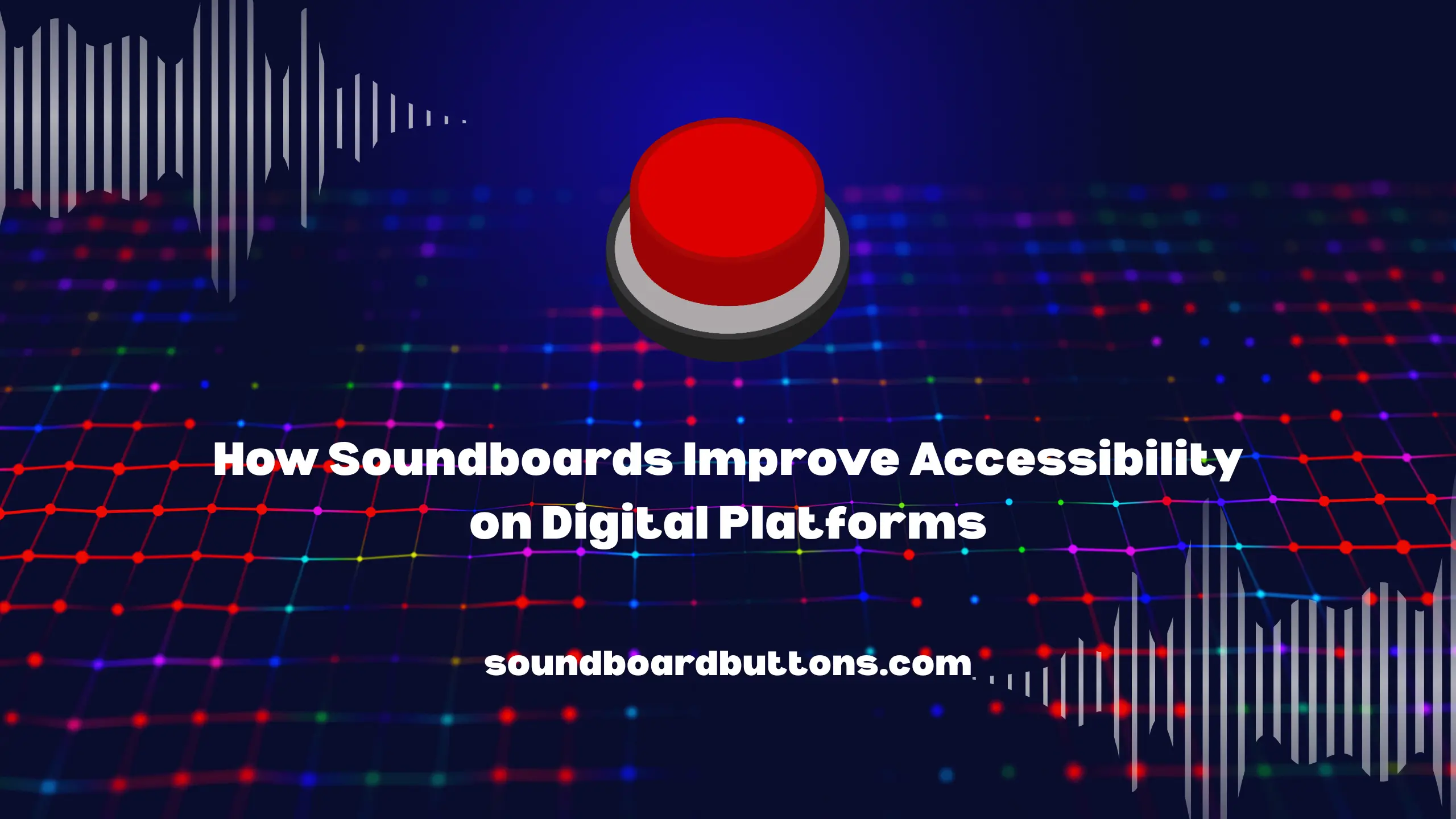Digital platforms have transformed how people communicate, but accessibility remains a challenge for many users. Soundboards improve accessibility on digital platforms by offering a user-friendly way to interact with content using pre-recorded audio clips.
These tools benefit individuals with disabilities, enhance user engagement, and create a more inclusive experience. Understanding how soundboards contribute to accessibility can help developers, educators, and businesses implement them effectively.
Why Accessibility Matters in Digital Platforms
Ensuring accessibility is important for making digital platforms usable for people with diverse abilities. Many users face barriers due to visual, auditory, or motor impairments, limiting their ability to interact with websites, apps, and online services. Accessibility guidelines, such as the Web Content Accessibility Guidelines (WCAG), emphasize inclusive design to ensure that everyone can engage with digital content.
Common Accessibility Challenges
- Limited Keyboard Movement– Users with motor disabilities may struggle with standard input methods.
- Text-Based Barriers – Visually impaired individuals rely on screen readers, but some content is not optimized for these tools
- Auditory Limitations – Deaf or hard-of-hearing users require alternatives to audio-based content.
- Cognitive Overload – Complex interfaces can make it difficult for neurodivergent users to navigate digital spaces.
How Soundboards Enhance Digital Accessibility
Soundboards offer an effective way to improve digital accessibility by providing quick-access audio clips that assist users in interacting with content. Here is how these tools can be customized for different needs, making them valuable for websites, applications, and social media platforms:
Supporting Users with Speech Disabilities
People with speech impairments, such as those with ALS or cerebral palsy, may struggle with verbal communication. Soundboards allow them to select pre-recorded phrases or custom messages, making digital interactions smoother. By integrating text-to-speech (TTS) and personalized sound clips, users can communicate more efficiently in online spaces.
Enhancing Website and App Navigation
Soundboards can help users guide digital platforms by providing audible cues for various actions. For instance, visually impaired users can benefit from sound-based feedback that confirms button clicks, form submissions, or menu selections. This approach ensures a seamless experience by reinforcing actions with clear, recognizable sounds.
Reducing Cognitive Load for Neurodivergent Users
Neurodivergent individuals, such as those with autism or ADHD, often find text-heavy interfaces overpowering. Soundboards simplify interaction by replacing complex instructions with auditory guidance. Users can select predefined responses, reducing the need for extensive reading and improving comprehension.
What are the Practical Applications of Soundboards in Digital Accessibility
Soundboards improve digital accessibility by enabling audio-based interaction and assisting users with disabilities in navigating online platforms. They create a more inclusive experience by offering customizable sound cues and alternative communication methods. Here are some of the applications of soundboards:
Assistive Communication Devices
Many assistive technologies incorporate soundboards to facilitate communication for individuals with disabilities. Devices like AAC (Augmentative and Alternative Communication) systems use customizable soundboards that allow users to convey messages effectively. These tools are widely used in education, healthcare, and personal communication.
Gaming and Virtual Interaction
Online gaming communities have embraced soundboards to create accessible interactions. Players with disabilities can use soundboards to communicate quickly, execute commands, or engage with teammates without relying on traditional voice chat. This inclusion fosters a more equitable gaming environment.
Workplace Accessibility
Remote work platforms can integrate soundboards to assist employees with disabilities. Workers with mobility impairments can use sound-based shortcuts for steering virtual meetings, while individuals with hearing impairments may rely on captioned audio cues to enhance their participation.
How to Implement Soundboards for Better Accessibility
Implementing soundboards for better accessibility requires seamless integration with assistive technologies, user-friendly customization, and optimized audio feedback. Ensuring compatibility across devices enhances inclusivity and improves user experience. The following steps can help you implement soundboards for better accessibility:
1. Choose a User-Friendly Soundboard Tool
Selecting the right soundboard tool is essential for maximizing accessibility. Platforms should offer customizable sound options, easy integration, and compatibility with screen readers. Some popular options include:
- Voicemod – Provides voice modification and customizable soundboards.
- Soundpad – Supports quick-access sound triggers for various applications.
- AAC-Based Soundboards – Specifically designed for assistive communication.
2. Optimize for Different Disabilities
A well-designed soundboard should cater to multiple accessibility needs:
- For Speech Disabilities – Include a variety of customizable messages.
- For Visual Impairments – Ensure compatibility with screen readers and Braille displays.
- For Hearing Impairments – Offer text alternatives and visual notifications.
3. Integrate with Digital Platforms
To maximize usability, soundboards should be seamlessly integrated into websites, apps, and communication tools. API-based solutions allow developers to embed soundboards into existing interfaces, ensuring smooth functionality across different platforms.
4. Test for Accessibility Compliance
Before deploying a soundboard, conduct accessibility testing to ensure it meets WCAG guidelines. User testing with individuals who have disabilities can provide valuable feedback for refining the tool’s usability.
What is the Future of Soundboards in Accessibility
As technology evolves, soundboards are becoming more advanced, incorporating AI-driven speech synthesis, multilingual capabilities, and adaptive interfaces. Machine learning enhances personalization, allowing users to receive context-aware audio responses that improve accessibility. These innovations create a more inclusive digital experience, particularly for individuals with disabilities.
Key developments include AI-powered soundboards that generate dynamic responses, voice-controlled accessibility for hands-free interactions, and cross-platform integration with smart devices and IoT systems. These advancements will further streamline digital communication, making online platforms more user-friendly and adaptable to diverse accessibility needs.
Conclusion
Soundboards are transforming digital accessibility by breaking communication barriers and simplifying interaction for users with disabilities. As AI-driven innovations advance, these tools will become even more adaptive, ensuring seamless and inclusive experiences across all digital platforms. Embracing soundboards is a step toward a more accessible and user-friendly digital world.
